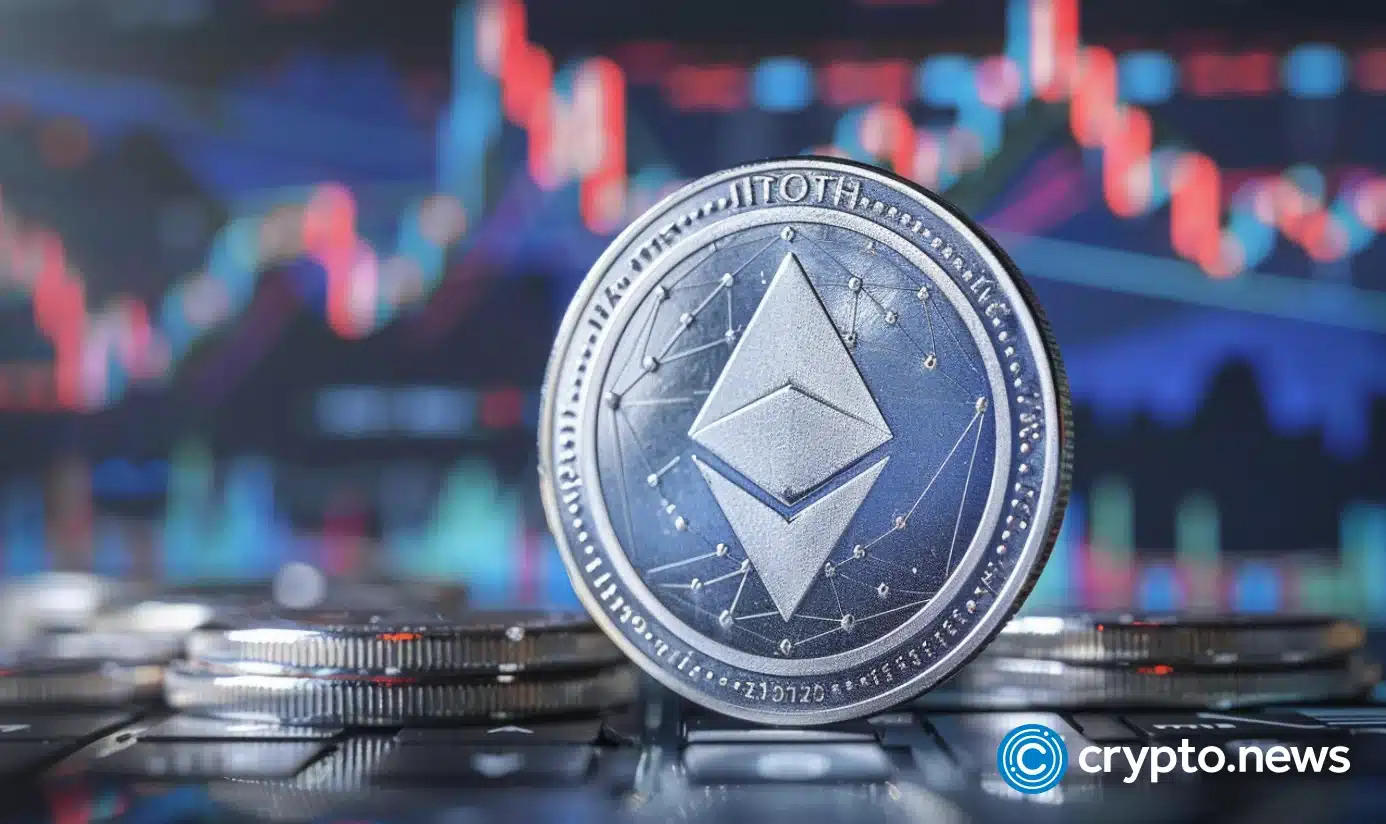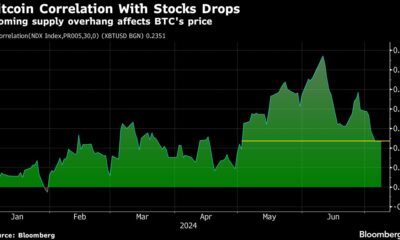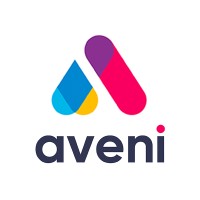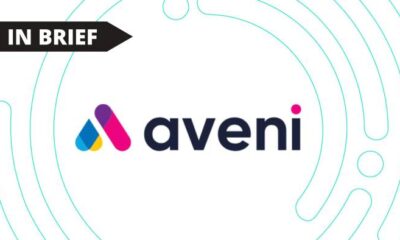Markets
US House Prepares to Vote on First Standalone Crypto Market Structure Bill

The US House of Representatives is poised to vote in favor of a crypto market framework bill for the first time, in a symbolic effort to radically reshape the country’s digital asset regulatory landscape.
The Financial Innovation and Technology for the 21st Century Act, sponsored by members of the House Financial Services and Agriculture Committees, will begin voting on Wednesday afternoon, where it is expected to pass with a bipartisan majority.
The bill, called FIT21, would grant the U.S. Commodity Futures Trading Commission (CFTC) greater spot market authority over digital assets considered commodities, while also creating new jurisdictional lines for the Securities and Exchange Commission (SEC). ). Crypto companies and digital asset issuers would have a framework for determining whether and how their assets are securities as defined by the bill, which in turn would allow them to know who their primary regulator could be.
Rep. Patrick McHenry (RN.C.), who chairs the Financial Services Committee, told reporters on Tuesday that he expected “a substantial vote” in favor of the legislation to demonstrate that there is real momentum for digital asset legislation , a week after the Senate voted in favor of a House resolution that overturned SEC accounting guidance.
The bill is expected to pass, with a handful of Democrats joining a majority of Republicans in voting for the bill. The bill’s path through the Senate is less clear, and the White House said Wednesday it opposed the legislation, although President Joe Biden did not threaten to veto.
The bill has been the subject of much discussion in recent days.
Rep. Jim Himes (D-Conn.), one of the at least nine Democratic lawmakers who said they would support the bill said it “seems[ed] I look forward to working with my colleagues on the Financial Services Committee in our continued oversight of this issue.”
“FIT21 is an important step in regulating the cryptocurrency industry and a significant improvement on the status quo,” he said in a statement.
Rep. Ro Khanna (D-California) announced he would vote in favor of the project shortly before the vote on Wednesday, saying “we need blockchain innovation here in America.”
Rep. French Hill (R-Ark.) told reporters Tuesday that the bill creates a “5-step test for whether something is a decentralized blockchain or not” and includes a roadmap for the regulator to use.
In comments to the House Rules Committee, he said lawmakers who developed the bill engaged with regulators — including the SEC — for more than a year, incorporating their feedback into the legislation.
“We include provisions to mitigate conflicts of interest. We impose capital and other necessary requirements on intermediaries. And we impose higher standards of custody,” he said.
There is also an interim process where companies need to file a “notice of intent to register” with agencies, he said.
Opposition to the project, however, begins within the House Financial Services Committee itself.
Rep. Maxine Waters (D-Calif.), the committee’s ranking member, dubbed the bill a “law unfit for purpose” and told the House Rules Committee on Tuesday that “it is perhaps the worst and most harmful deregulation proposal that I’ve already done. we’ve seen for a long time”, comparing it to Commodity Futures Modernization Act. The CFMA, Waters charged, deregulated certain derivative products that later “exploded our economy when AIG collapsed.”
FIT21 does not give the CFTC greater authority to combat fraud or other crimes, despite directing the agency to oversee digital commodities, she said. The bill also eliminates disclosure requirements after 180 days, meaning the regulator cannot force companies it is supposed to regulate to provide audited financial statements after that deadline.
“What’s even more problematic is the bill’s definition of ‘investment contract assets,’” she said. “Securities that meet this definition would be transferred into a regulatory void, with no primary regulator and virtually no laws and regulations to speak of. Importantly, the investment contract asset definition is not limited to cryptography and it would be quite easy for both cryptographic and traditional securities to be formatted to meet this definition.”
A group of trade unions, consumer protection organizations, academics and others sent a public letter to House Speaker Michael Johnson (R-La.) and Minority Leader Hakeem Jeffries (DN.Y.), asking them to vote against the bill and offering a list of concerns similar to Gensler’s.
The letter took aim at the industry more broadly, saying that crypto “still struggles to demonstrate viable use cases outside of speculative investing” and referencing the several ongoing bankruptcies and civil and criminal litigation.
“The industry has recovered superficially this year, in part due to the controversial approval of spot BTC ETPs by the Securities and Exchange Commission,” the letter said. “However, the scams, hacks, theft, instability, reckless promotional activities and regulatory evasion that were present during the last crypto market remain endemic in the industry today.”
The letter was signed by organizations including the AFL-CIO, Americans for Financial Reform, Revolving Door Project, National Consumer Law Center and more than 30 others, as well as 10 individuals.
Echoing Gensler, the groups said they were concerned that the bill would weaken existing securities laws to the point where even non-crypto companies could “avoid stricter oversight” by linking to a decentralized network (or at least claiming which were linked to a decentralized network). network). While the bill gives the CFTC greater authority, the letter says that authority “is vague,” to the point that it could undermine other agencies like the Consumer Financial Protection Bureau.
“Overall, we believe that this bill, as drafted, introduces a political ‘cure’ that would be far worse than the disease and would create significant harm within and far beyond the crypto industry,” the letter read.
The bill’s supporters argue that legislation is needed to support companies’ efforts to “build a better financial services system and a better Internet.”
“Since the inception of the Bitcoin network in 2009, the blockchain and digital asset industry has existed without targeted market regulation,” a letter presented by the Blockchain Association, a lobby group, said. “The absence of clear rules creates confusion in the market for companies – and leaves users and consumers unprotected.”
The letter, signed by groups including stablecoin issuer Circle, Ethereum incubator ConsenSys, venture capital firm Digital Currency Group, exchanges such as Kraken and 50 other companies in the sector, further argued that a “lack of clarity” was running the risk of putting the US behind. in the “global technology race”.
SEC Chairman Gary Gensler published an affirmation on Wednesday opposing the legislation. In it, he raised the specter of crypto’s various meltdowns and scams, suggesting that the bill could allow even traditional pump and dumpers or penny stock dealers to escape oversight by branding themselves as users of decentralized networks.
“We should make the political choice to protect the investing public rather than facilitate the business models of non-compliant companies,” he said.
Markets
Crypto Markets Rebound as Spot Bitcoin ETFs Attract Massive Inflows

This week saw $722 million worth of Bitcoin spot ETF inflows, including the largest daily inflow in a month.
Cryptocurrency markets rallied on Wednesday, driven by inflows into spot Bitcoin exchange-traded funds (ETFs).
The price of Bitcoin (BTC) is up 3% over the past 24 hours to last change hands at $65,200, according to CoinGecko. Ethereum (ETH) is up 2% and is trading at $3,471. Solana (SUN) and Polkadot (POINT) increased by 4%.
Bitcoin spot ETFs saw $422 million in daily inflows on Tuesday, the highest in the past 30 days, according to Far side data, . The all-time record for a single day was $1.05 billion on March 12.
Among Tuesday’s top contributors, BlackRock’s IBIT led with $260 million in inflows, followed by Fidelity’s FBTC with $61 million. This week has already seen more than $722 million in inflows.
Among the top 100 cryptocurrencies by market cap, Worldcoin (WLD) led with a 28% increase, followed by Helium (HNT) with 20% and Lido DAO (LDO) with 15%.
Worldcoin, a decentralized identity project led by OpenAI CEO Sam Altman, announced is extending the lockups for early investors and team members. This means that tokens will be gradually released through 2029, instead of the original 2027 plan. Token unlocks are generally seen as a negative because they increase supply and early investors can sell their tokens for profit.
Meanwhile, XRP, the token of the XRP Ledger network, jumped 8% after the CME and CF benchmarks introduced new indices and reference rates for XRP.
U.S. stocks faced a downturn on Wednesday. The S&P 500 fell 1%, while the Nasdaq Composite and Dow Jones Industrial Average both fell 2%.
Markets
Altcoins on the cusp of a major breakout – WLD, AR, and INJ prices could surge by 20% in the coming days

Crypto markets appear to have been taken over by the bulls as major tokens have surged above their crucial resistance zone. Bitcoin surged above $65,000 while Ethereum was above $3,500, and XRP, which had remained passive for quite some time, surged over 40% in the past few days to hit $0.6. The uptrend has been captured in most altcoins, with Worldcoin (WLD), Arweave (AR), and Injective (INJ) leading the rally. Here’s what to expect for these tokens in the coming days.
Worldcoin (WLD) Price Analysis
O Worldcoin Price has been trading inside a descending wedge since it marked a new ATH near $12 in the final days of Q1 2024. The recent price action helped the price break out of the upper resistance of the wedge, breaking above the crucial resistance zone between $2.21 and $2.39. Market sentiments have changed, but technicals suggest that the bulls may remain passive for a while, which could offer some room for a bearish pullback.
The price broke out of the wedge with a significant increase in volume, but the current volume suggests that the bulls have taken a step back. Meanwhile, the RSI is about to reach the upper boundary, which could attract bearish forces. Additionally, the DMI has undergone a bullish crossover, but the decline in the ADX suggests that the rally may remain consolidated above the gains. Therefore, the WLD price is expected to maintain a horizontal consolidation between $3 and $3.3 and trigger a fresh rally to $4.4 during the next bullish rally.
Arweave (AR) Price Analysis
Arweave formed a strong base around $25, which helped the rally trigger a recovery during the bearish attack. Mt. Gox and German terror forced the price to fall below $20. However, the recent price action has brought the altcoin within the bullish range and raised expectations of maintaining a decent uptrend for a few more days.
AR price has hit one of the major resistances around $30 to $31.5, which could act as a strong base once overcome. The buying volume is slowly increasing, which could keep the bullish hopes for the rally high. Moreover, the supertrend has just flashed a buy signal, indicating a clean reversal of the trend. Therefore, AR price seems primed to maintain a healthy uptrend and rally above $40. However, if the bulls maintain a similar trend, making new highs above $50 may not be a tedious task for the bulls.
Price Analysis of Injective (INJ)
Injective price has been showing sharp strength since the beginning of the year and hence, the recent turnaround is expected to revive a good uptrend going forward. The bears engulfed the rally to a large extent, but the recent price action suggests that the bulls have regained their dominance. Therefore, INJ price is expected to maintain a strong uptrend with a bearish interference on the way down.
INJ price has surged above the lower support zone and has registered consecutive bullish candles. Although the volume is below the required levels, the OBV is maintaining a sharp uptrend. Furthermore, the Ichimoku cloud lead span B is heading towards the lead span A and a healthy crossover indicates the start of a new uptrend. However, INJ price may be out of the bears’ reach once it secures the resistance zone between $30.77 and $32.12, which seems to be on the horizon.
Markets
Ethereum at $3.5K, Exchange Supply Hits 34-Month High

Ethereum (ETH) supply on exchanges has hit a 34-month high as the asset’s price surpassed the $3,500 mark.
ETH has risen 2.3% over the past 24 hours and is trading at $3,490 at the time of writing. The second-largest cryptocurrency — with a market cap of $419 billion — briefly touched an intraday high of $3,517 earlier today.
ETH Price, Whale Activity, RSI, and Exchange Supply – July 17 | Source: Santiment
Ethereum’s daily trading volume also increased by 7.6% to reach $19.8 billion.
According to data provided by Santiment, the supply of Ethereum on exchanges has reached $19.52 million ETH. This level was last seen in September 2021, when the asset was trading around the same price.
On the other hand, data from the market intelligence platform shows that the number of whale transactions has fallen by 12% in the last day — falling from 8,730 to 7,629 unique transactions per day.
The move shows that the supply of Ethereum on exchanges has been increasing with small deposits rather than large transactions from whales.
Additionally, the ETH Relative Strength Index (RSI) is currently hovering at the 60-mark, per Santiment. The indicator shows that Ethereum is slightly overbought at this price point, but it may not be in a critical position due to its large market cap.
One of the main drivers of Ethereum price increase is ETH spot expectations ETFs in the US Investment products are scheduled to start trading on July 23rd.
Markets
Bits + Beeps: How to Play the ‘Trump Trade’ in Cryptocurrencies After the Assassination Attempt

Also, how much will the Fed cut rates (and when)? What will be the inflows into ETH ETFs? And what is the near future for Bitcoin?
Posted on July 17, 2024 at 12:00 PM EST.
Listen to the episode at Apple Podcasts, Spotify, Capsules, Source, Podcast Addict, Pocket molds, Amazon Musicor on your favorite podcast platform.
In this episode of Bits + Bips, hosts James Seyffart, Alex Kruger and Joe McCann, joined by guest Jack Platts, dive into the market reaction to the recent assassination attempt on former President Donald Trump, analyzing how this event will influence the 2024 US presidential election and the cryptocurrency markets.
They also cover potential rate cuts: Could there be a cut in July? How big could the September rate cut be? Could the decision be influenced by the upcoming election?
They also give their predictions on what percentage of BTC ETF inflows the ETH ETFs will reach, and James talks about what he expects for Grayscale’s ETHE (hint: his outlook would be positive for ETH).
Finally, they delve into what’s next for Bitcoin as the German government runs out of BTC and Mt. Gox distributions begin. Just now?
Program Highlights:
- Whether Trump’s shooting decided the election and whether the event caused a “flight to safety”
- How election markets are becoming a place to watch election probabilities and whether cryptocurrencies “lean right”
- Whether rate cuts will occur in July or September and by how much they will cut: 25 bps or 50 bps
- How Joe sees the relationship between global liquidity cycles, rate cuts, and the potential rise of Bitcoin
- What are the new updates about Ethereum ETFs and their expected launch?
- Why Solana Hasn’t Performed Significantly Better Since Trump News
- What Market Breadth Indicates About the Current Market Rally and the Impact of Rates on Small Caps
- Everyone’s predictions on ETH ETF inflows and how much outflow we’ll see on Grayscale’s ETHE
- What’s Next for BTC After German Government Exits Bitcoin and Mt. Gox Giveaways Starting This Week
Hosts:
Guest:
- Jack PlattsCo-Founder and Managing Partner of Hypersphere Ventures
-

 DeFi12 months ago
DeFi12 months agoDeFi Technologies Appoints Andrew Forson to Board of Directors
-

 Fintech12 months ago
Fintech12 months agoUS Agencies Request Information on Bank-Fintech Dealings
-

 News1 year ago
News1 year agoBlock Investors Need More to Assess Crypto Unit’s Earnings Potential, Analysts Say — TradingView News
-

 DeFi12 months ago
DeFi12 months agoSwitchboard Revolutionizes DeFi with New Oracle Aggregator
-

 DeFi12 months ago
DeFi12 months agoIs Zypto Wallet a Reliable Choice for DeFi Users?
-

 News1 year ago
News1 year agoBitcoin and Technology Correlation Collapses Due to Excess Supply
-

 Fintech12 months ago
Fintech12 months agoWhat changes in financial regulation have impacted the development of financial technology?
-

 Fintech12 months ago
Fintech12 months agoScottish financial technology firm Aveni secures £11m to expand AI offering
-

 Fintech12 months ago
Fintech12 months agoScottish financial technology firm Aveni raises £11m to develop custom AI model for financial services
-

 News1 year ago
News1 year agoValueZone launches new tools to maximize earnings during the ongoing crypto summer
-

 Videos6 months ago
Videos6 months ago“Artificial intelligence is bringing us to a future that we may not survive” – Sco to Whitney Webb’s Waorting!
-

 DeFi1 year ago
DeFi1 year agoTON Network Surpasses $200M TVL, Boosted by Open League and DeFi Growth ⋆ ZyCrypto

















